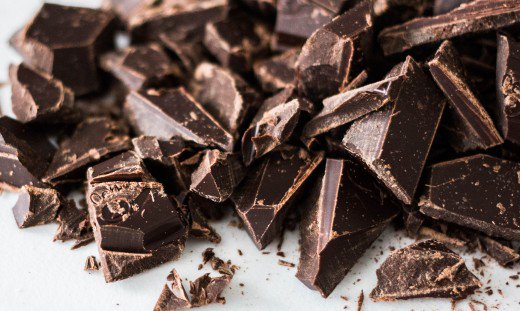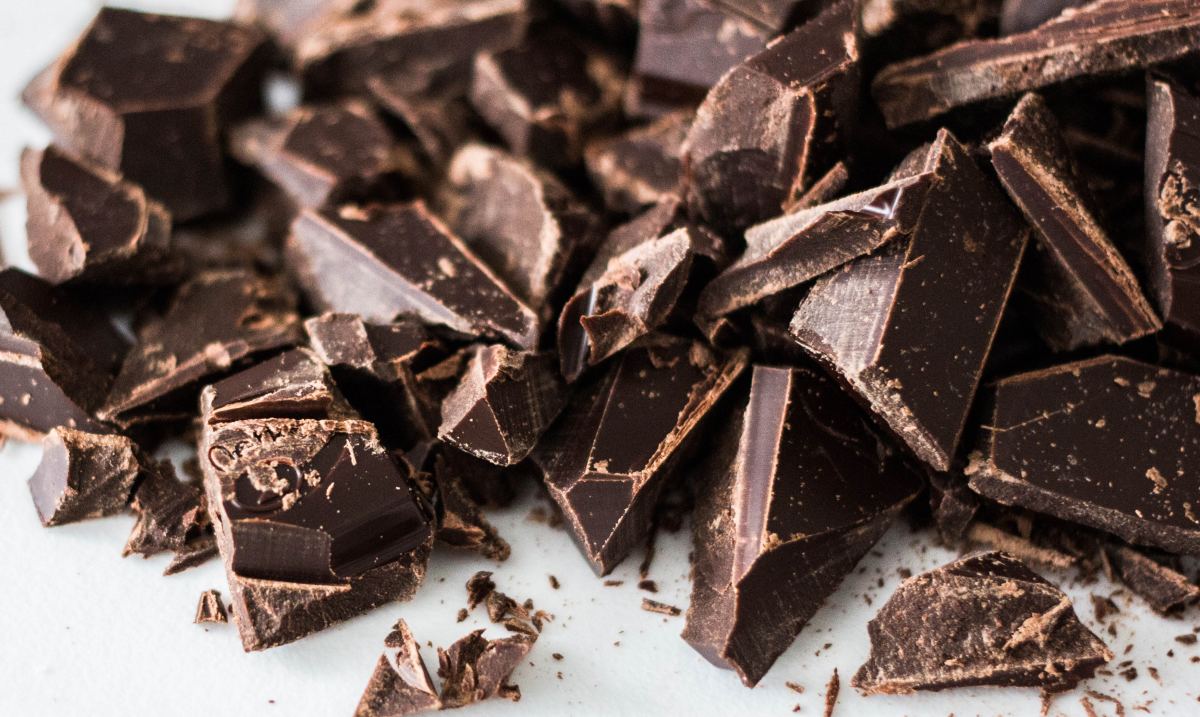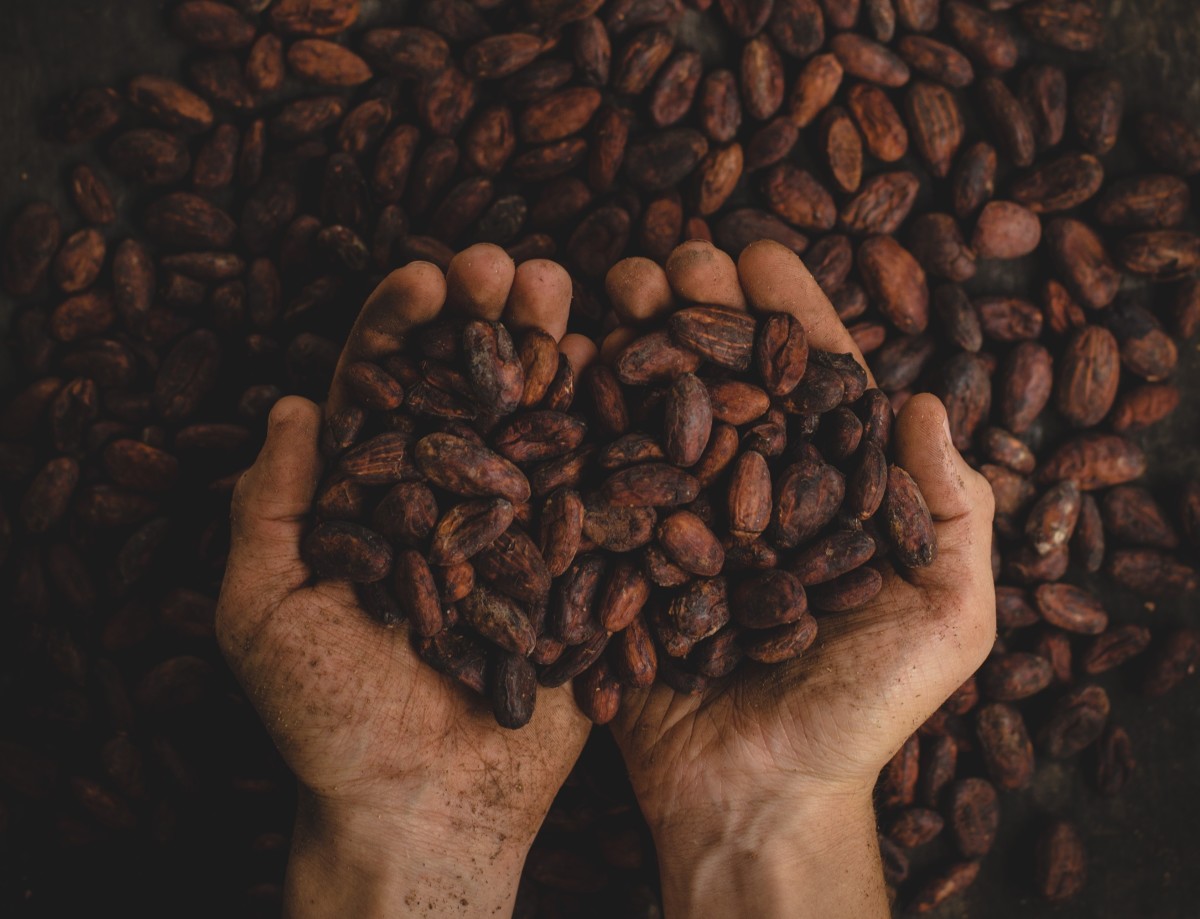Learn about brain health and nootropics to boost brain function
Eating Dark Chocolate and Its Effects on the Brain


Getting to Know Dark Chocolates More
This article tackles the significance of dark chocolate in improving human brain health. Among its many benefits are the following effects:
- Reduction of neurodegenerative illnesses
- Improvement of mood and performance in cognitive tasks
- Contains high antioxidant levels
The Origin of Chocolates: A Brief History
During the 15th century, ancient Mayan and Aztec civilizations of Central America drank finely ground bitter cacao beans mixed with hot water and chilies. These civilizations also used the same beans as a currency in trading raw materials.
When Christopher Columbus was on his last journey to the New World, he came across a canoe with agricultural products which included cacao beans. He then brought these beans to Spain where people grew fond of its rich taste. With such popularity, the cacao beans were consumed in different ways (Kuwana, 2010).

What is a Chocolate?
Cacao beans serve as the major ingredient of chocolates. These are the seeds of Theobroma cacao plant that have gone through drying and fermentation.
According to Bennion, Bent, and Bamford (1997), “Chocolate may be defined as a mixture of toasted cocoa beans and sugar ground down to a very fine particle size with or without the addition of butter.” It contains about 400 chemicals that can be grouped into fats, flavonoids, amino acids, and methylxanthine.
A chocolate's fat content is comprised of oleic acid, stearic acid, and palmitic acid. Its flavonoids have flavanols and polyphenols. Tryptophan, phenylethylamine, anandamide, tyrosine, dopamine, and monoamine oxidase inhibitors form its set of amino acids. Its methylxanthine component has theobromine and caffeine (Arndt, 2009).
How Chocolates are Made
The cocoa beans undergo different processes for manufacturing chocolates. Initially, the cocoa beans are roasted to make the bean shells brittle. Later, the cocoa beans are transferred to a winnowing machine.
As a mechanical device or contrivance, the winnowing machine extracts the actual cacao bean and squashes it to form “cacao nibs”. These cacao nibs contain high amounts of cocoa butter (fat) and cocoa solids. They are then pulverized and liquefied to make “chocolate liquor”. Eventually, the chocolate liquor is pressed using a compression technology to obtain cocoa butter.
The mixing process comes next. This stage of the chocolate production sets the difference in the taste of several types of chocolates. Manufacturers combine the chocolate liquor to other ingredients like sugar, milk, lethicin, and vanilla in varying quantities. This step is followed by the conching process to determine the final flavor and texture of the chocolate.
Lastly, the tempering phase of chocolate begins. This procedure controls the cocoa butter’s formation of crystals to ensure that the chocolate will have a smooth and shiny appearance (Afoakwa, 2011).
Different Types of Chocolates
The mixing process involved in making chocolates creates several types. These chocolates can be classified into three: white chocolate, milk chocolate, and dark chocolate.
White chocolate is made up of cocoa butter, milk solids, and “nutritive carbohydrate sweeteners”. It does not have any chocolate liquor.
Similarly, milk chocolate contains cocoa butter, milk, sweeteners and flavorings. It has at least 10% chocolate liquor, and 12% whole milk (Dyer, 2006).
On the other hand, dark chocolate carries a different composition. As Kipfer (2012) describes, dark chocolate “…has no added milk, and is darker in color, and less sweet than milk chocolate. The cocoa content [chocolate liquor] of commercial dark chocolate bars can range from 30% (sweet dark) to 70%, 75%, or even above 80% for extremely dark bars.”
Hence, the types of chocolate vary in terms of process, composition, and flavor. Aside from these aspects, the effects of each kind of chocolate differ among individual consumers. The amount of cocoa butter in each chocolate type plays an important role in this regard (Wybauw, 2007).
Considering that dark chocolate has the highest degree of cocoa content, it would be interesting to know its potential effects on people who like to eat it.
Advantages of Eating Dark Chocolates
Among the different varieties of chocolates, dark chocolates are known to be the most nutrient-packed. It offers many benefits to chocolate lovers. What advantages do dark chocolates have?
1. Minimizes neurodegenerative illnesses
Dark chocolates consist of ample amounts of minerals like magnesium and amino acids, such as monoamine oxidase inhibitors or MAOIs (Stanton, 2011; Wotton 2010). To prove this point, Wootton (2010) refers to the studies done by Dr. Jensen and Dr. Cousens.
Dr. Jensen showed that the magnesium compound contained in dark chocolates decreases the coagulation of blood. This means that dark chocolate helps the heart bring more blood and oxygen to the brain.
On the other hand, Dr. Cousen’s study revealed that high levels of MAOIs also increase levels of anandamide and dopamine. The amount of these chemicals in the brain differentiates a child’s brain from that of an adult’s. The former’s brain has high amounts of these chemicals in contrast to the latter’s brain. With this condition, when an adult eats moderate amounts of dark chocolates, then he or she helps maintain the "youthfulness" of his or her brain.
Likewise, theobromine, a type of methylxanthine, stimulates the brain by relaxing the body’s muscles. It aids in dilating the veins and arteries to allow blood flow to the brain more easily (Wootton & Horne, 2012).
In addition, brain scientist and researcher Dr. Henriette van Praag found epicathecin in cocoa (Quigley & Wright, 2008). Epicathecin is a flavonol-rich compound that could lessen degeneration of nervous tissues. If unhampered, such degeneration can cause Alzheimer’s disease and cognitive disorders. Therefore, compounds in dark chocolate helps increase the rate of blood circulation to the brain, and inhibits mental illnesses and effects of ageing.
2. Improves mood and performance in cognitive tasks
Besides strengthening blood circulation to the brain, epicathecin enhances a person’s mental capacity. A study by Professor Macdonald, as stated in the book of Hally (2012), revealed that consuming a cocoa drink loaded with flavonols, a main component of dark chocolate, aids in the concentration and performance of certain activities.
Moreover, based on a research funded by chocolate company Mars, adults with cognitive disorders who drank higher concentrations of flavonols for eight (8) weeks did better on cognitive tests that required them to recall answers on a shorter period of time (Matthews, 2012). Said experiment grouped the participants according to the level of flavonols present in a cocoa-based beverage that they had to consume.
As the performance in cognitive tasks improves, a person's mood is also being affected. MAOIs content of dark chocolate let levels of serotonin and dopamine in the brain to remain higher (Wootton, 2010). It acts as a fuel in producing endorphins which make a person feel a sense of pleasure upon eating. Similarly, serotonin, which is a product of tryptophan ingredient in chocolates, produces the same feeling of happiness (Dyer, 2006).
Aside from serotonin, dopamine, and endorphins, dark chocolates are also rich in phenylethylamine and anandamide (Weber & Zimmerman, 2010). Phenylethylamine, known as the love chemical, establishes the feeling of attraction and excitement just like what people feel when they fall in love. Additionally, anandamide makes a person feel elated.
Based on a study published by the Georgia Institute of Technology and the University of California, as cited in the book of Wolfe and Shazzie (2005), anandamide was found in men who run at a moderate rate and is accountable for the “runner’s high” in which people feel euphoric at their peak of exercise.
3. High antioxidant levels
Christiansen (2018) writes that the body uses oxygen as it metabolizes food. This process releases harmful byproducts called free radicals that negatively impact body cells. Such condition causes oxidative stress that plays a role in age-related diseases, such as Alzheimer's.
As naturally occurring substances, antioxidants prevent the damage brought by free radicals that attack healthy cells (Rapitis, 2013). Flavonoids are compounds that have strong antioxidant properties. These are contained in dark chocolates in the presence of flavonols (Schmidt, 2002).
Studies show that dark chocolates have the highest Oxygen Radical Absorption Capacity (ORAC) scores. ORAC is a medium of determining the efficiency of a substance’s antioxidants. Dark chocolate has 13,000 ORAC units compared to milk chocolate (6,740 ORAC units) and prunes (5,770 ORAC units) (Schmidt, 2002).
Furthermore, according to a study by Holland’s National Institute of Public Health and Environment, chocolate, specifically the dark type, has four (4) times the antioxidants that are found in green tea. It has 53.5 milligrams (mg) of the antioxidant epicatechins per 100 grams (Quigley & Wright, 2008).
Based on the Chocolate Manufacturers Association, as mentioned in the book of Quigley and Wright (2008), dark chocolate is considered as a superfood because it has amounts of polyphenol antioxidants that are almost eight (8) times greater than the amount found in strawberries. This superfood can help combat the weakening of cognitive skills that may result in memory loss and other related brain ailments.
Disadvantages of Eating Dark Chocolates
Despite studies that show the positive effects of dark chocolate, there are research findings that indicate the negative side of consuming it.
-
Short-term mental and mood benefits
In Concepts of Intelligence (2012), Hally cites a study conducted by Professor Ian Macdonald who opined that, “Acute consumption of the particular flavonol-rich cocoa [dark chocolate]…was associated with increased grey matter flow for two to three hours.” This means that it only brings short-term benefits. This is due to anandamide found in the brain, and in dark chocolates.
Anandamide is a chemical that makes an individual have a semblance of the same feeling of elation when taking drugs like marijuana. Its presence in the brain does not make a person feel pleasure all the time because it rapidly breaks down (Kuwana, 2010).
Nonetheless, as Tomaso, Beltramo, and Piomelli (1996) point out, eating chocolate can provide a good sense of well-being, however temporarily. Two other chemicals, namely N-oleoylethanolamine and N-linoleoylethanolamine, are present in chocolate that hinder the natural breakdown of anandamide. Dark chocolates contain more of these chemicals, thus the short-term effect of feeling good can somehow be prolonged.
-
May contribute to obesity
Chocolates contain saturated fat and sugar that when not eaten in moderation may lead to increased calorie consumption and weight problems (Kuwana, 2010). Taking the combination of sugar and fat content of chocolates into account, not all chocolates can detrimentally affect a person because these have a lower glycemic index compared to other sweets. The glycemic index indicates how a certain food regulates blood sugar levels.
Stearic acid and oleic acid, which help reduce blood cholesterol, are present in cocoa butter. Since dark chocolate contains high amounts of cocoa butter, it may help increase levels of good cholesterol.
Moreover, dark chocolate only has 22 glycemic index which does not negatively affect blood sugar levels compared to milk chocolate that has 40-70 glycemic index (Dyer, 2006). Therefore, dark chocolate may be considered as part of a healthy diet provided that it is consumed moderately (Stanton, 2011).
In conclusion...
Based on studies that show its good effects on cerebral or cognitive functioning, sense of well-being, and immune system, eating dark chocolate is good for the human brain. The National Institute of Health (2011) supports this view, quoting Dr. Luc Djousse of Harvard Medical School who said, “For those who are already consuming chocolate, I would advise them to look for the darker ones…not the white chocolate or the milk chocolate. You won’t get any of the benefit. It’s just going to be unneeded calories.”
Indeed, with its composition of various beneficial chemicals and low glycemic index, dark chocolate can boost human health. As Cook (2009) notes, it is possible to enjoy eating a particular food, especially if its nutrients feed the brain.
References
- Afoakwa, E. O. (2011). Chocolate science and technology. West Sussex, UK: John Wiley and Sons.
- Bennion, E. B., Bent, A.J., and Bamford G.S.T. (1997). The technology of cake making. London, UK: Blackie Academic and Professional.
- Christiansen, S. (2018). How do antioxidants lend themselves to brain health? Alzheimers.net
- Cook, M. S. (2009). The brain wash: A powerful, all-natural program to protect your brain against Alzheimer’s, chronic fatigue syndrome, depression, Parkinson’s,and other diseases. West Sussex, UK: John Wiley and Sons.
- di Tomaso E., Beltramo M., and Piomelli D. (1996). Brain cannabinoids in chocolate. Nature. doi:10.1038/382677a0
- Hally, T. J. (2012). Concepts of intelligence. Bloomington, IN: iUniverse.
- Kipfer, B.A. (2012). The culinarian: A kitchen desk reference. Hoboken, NJ: John Wiley and Sons.
- National Institute of Health. (2011). Claims about cocoa: Can chocolate be really good for you? NIH News in Health.
- Quigley, D. and Wright, B. (2008). The everything superfoods book: Discover what eat to look younger, live longer, and enjoy life to the fullest. Massachusetts, USA: Everything Books.
- Rapitis, G. (2013). The lighter side of dark chocolate: Take it to the heart. Bloomington, IN: AuthorHouse.
- Schmidt, P. (29 March 2002). Chocolate’s potential health benefits − and its effect on chronic fatigue syndrome patients. Prohealth.
- Stanton, R. (2011). The choice guide to food: How to look after your health, your budget, and the planet. Sydney, AU: UNSW Press.
- Weber, J. and Zimmerman, M. (2010). The men’s health big book of food and nutrition: Your completely delicious guide to eating well, and staying lean for life!. New York, NY: Rodale.
- Wolfe, D. and Shazzie. (2005). Naked chocolate: The astonishing truth about the world’s greatest food.Berkeley, CA: North Atlantic Books.
- Wootton, S. (2010). Keep your brain sharp: Teach yourself. London: Hachette, UK.
- Wootton, S. and Horne, T. Advanced brain training: Teach yourself.London: Hachette, UK.
- Wybauw, J.P. (2007). Fine chocolates: Great experience. Trento, Italy: Lannoo Uitgeverij
Click here to view full article